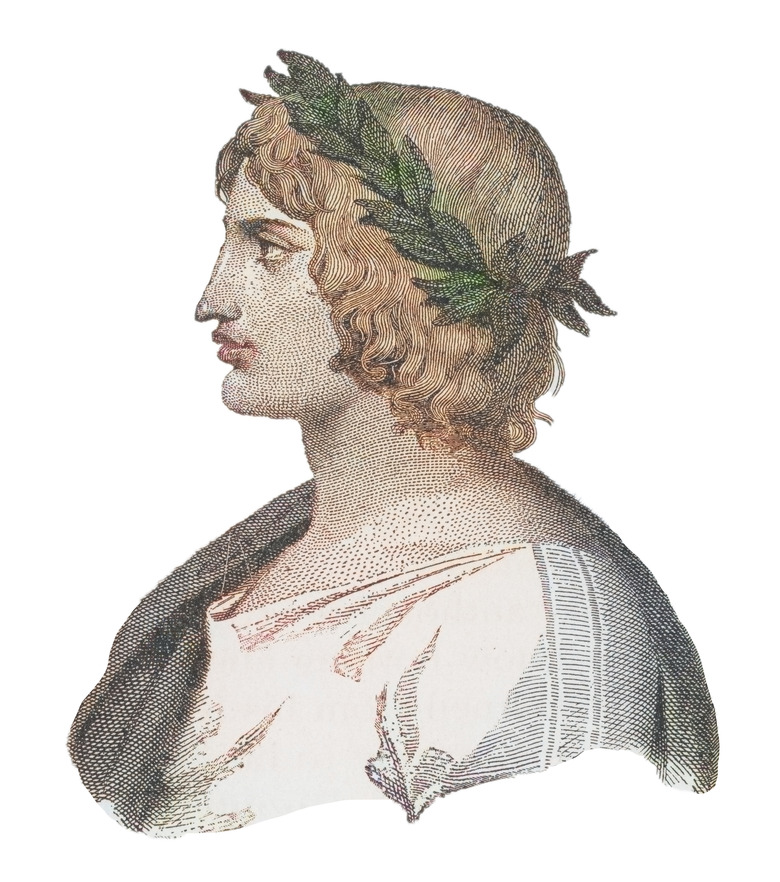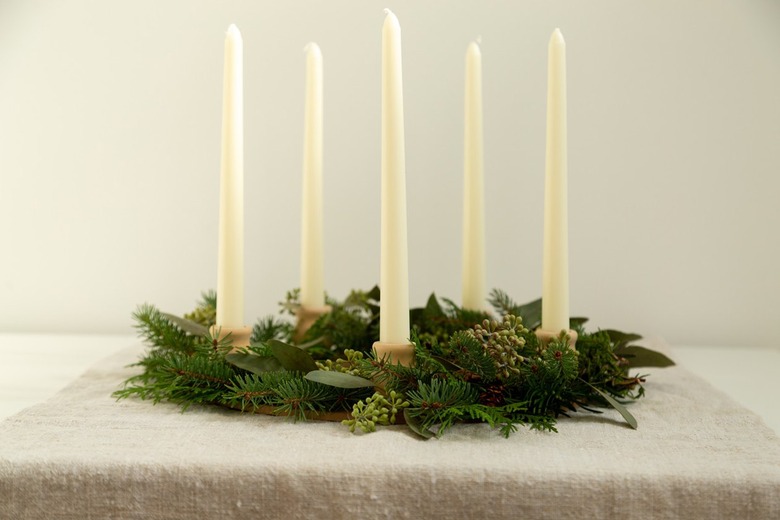Why Do People Put Wreaths On Doors?
When it comes time to deck the halls, one of the first decorations to go up is a big evergreen wreath on the front door. It's a common holiday practice, but where did this tradition come from? It turns out wreaths have been used by cultures around the world for millennia — and not just for the holidays.
Some of the earliest records of wreaths date back to the ancient Greeks, Romans, and Egyptians, according to Britannica. Both the Greeks and Romans, for instance, were partial to wreaths made of laurel. Though, those wreaths were more commonly worn as crowns rather than used as door decorations. Olympic champions, for instance, donned laurel wreaths upon their heads, while Romans wore laurel crowns as a mark of honor reserved for government officials and warriors.
Still, wreaths did make an appearance on doors in the ancient days. Per Britannica, courting Greeks would hang wreaths on the doors of their beloved.
As for the Christmas connection, that came far later in history. According to Time, the evergreen wreath was born out of the tradition of Christmas trees. Around the 16th century, Germans began bringing evergreen trees into the home for Christmas, adorning them with apples to represent the Tree of Life and the story of Adam and Eve.
In order to shape the trees into a triangle to represent the Holy Trinity — and to fit them in the house — the trees had to be pruned. The excess evergreen branches were then woven into wreaths and used as tree ornaments before eventually migrating to the front door, where they were hung as a symbol of welcoming the Christmas spirit in, according to the New York Times. They also migrated to tabletops where they have been paired with four candles to become advent wreaths.
Christmas wreaths are also rife with symbolism. For starters, they were originally made from branches that came off evergreen trees, plants that were believed to have spirits and were regarded for their resilience during the cold, dark winter months. (That tradition stems from paganism, by the way, per the New York Times.) Then, when wreaths were made with holly and berries, those materials represented the crown of thorns worn by Jesus and the drops of blood falling from his head.
The shape of wreaths also has symbolic meaning. The New York Times states that the infinite circle "became a Christian symbol for Christ's suffering and ultimate triumph over death."
These days, wreaths are somewhat detached from their origins, serving primarily as festive decorations for the holiday season. They're also commonly used throughout the year, too — both fall wreaths and spring wreaths have become popular trends as pure decoration.


